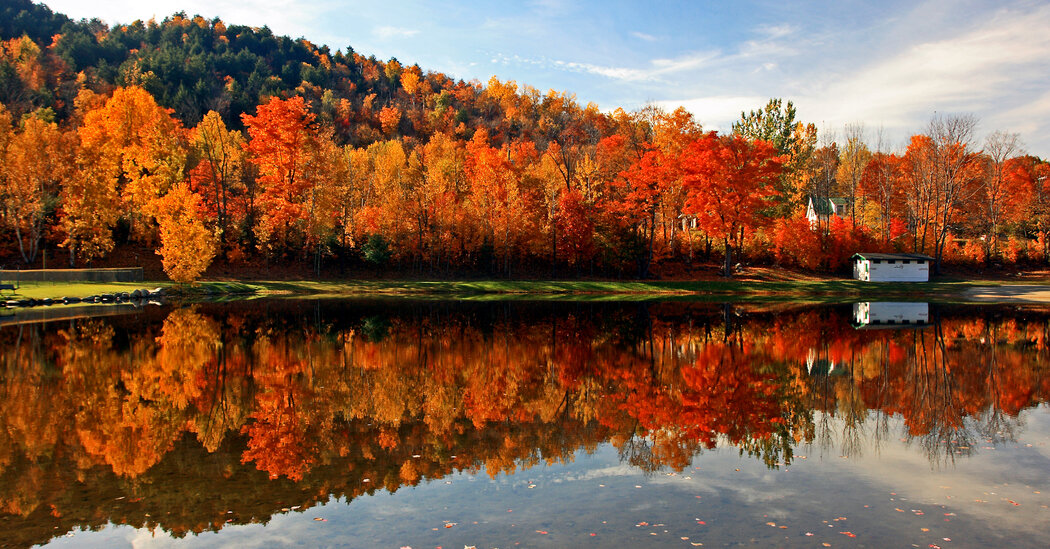Heat domes, droughts, smoky skies, tropical deluges: After a record-breaking summer of extreme weather events, dare we dream of crisp nights, cozy sweaters and the colors of fall?
“This summer really was a chaotic mix of record wettest and record driest, and fall colors will reflect that,” said Austin Rempel, director of forest restoration at American Forests, a nonprofit forestry organization. The Northeast and parts of the northern Rockies and Southern California had extremely wet summers, while the Southwest had one of its driest on record, he said.
That stress can make trees lose their leaves earlier, but it can also make the leaf color “really pop,” said Tara L. Bal, a forestry professor at Michigan Tech. When leaves and trees are stressed, she explained, “the bright reds and oranges and yellows actually are stronger.”
Just how vivid those leaves are depends on the right combination of cool and dry fall weather starting in mid-September, when colors start to change in the West and Northeast, and through late October, when they are at their prime in the Midwest and the Southeast.
Here are five beautiful places to catch the leaves — and while you’re there, you can peek out of covered bridges, gaze up at waterfalls, ride a tramway or a train, or even try to spot a legendary Bigfoot-like creature known as the Grassman.
New Hampshire
White Mountains Trail
Driving the White Mountains Trail, a 108-mile loop that winds through groves of gold birches, bronze beeches, and orange, yellow and red mountain maples, you may find yourself unable to resist stopping in the middle of a covered bridge to peek through the walls.
The Albany Covered Bridge, which crosses the rocky Swift River in the White Mountain National Forest near Conway, N.H., is one of 54 remaining covered bridges in the state. Built in 1858, it features a red roof and weathered brown walls with gaps that let the leaves peep at you.
This year, the peak fall colors along the loop are expected to begin at the end of this month and continue through the second week of October.
From the study at his farmhouse in Pittsfield, in western Massachusetts, Herman Melville gazed at 3,491-foot Mount Greylock, whose humped shape possibly inspired the white whale in “Moby-Dick.” When the trees on that hump start to change, it becomes more of a gloriously mottled whale.
The mountain’s colors typically peak in early to mid-October, with golds, bright oranges and vivid reds, mainly from tamarack, striped…
Click Here to Read the Full Original Article at NYT > Travel…
